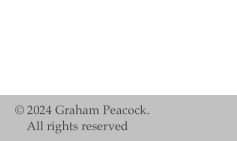|
Dr. Kenworth W. Moffett, from "Post-Color Field Painting"
Moffett's Artletter Special Supplement #2, March, 1986.
The following is a discussion of the work of some of our best younger abstract painters. All are in their thirties and forties except Walter Darby Bannard who is just over fifty, but who belongs with this younger group. This group looks past- or through- the second generation, the "color field" painters, to the first generation, the Abstract Expressionists. In this they obey what Walter Friedlander called the "grandfather law'; the tendency of a generation to go beyond the immediately preceding "father's" generation by turning to the "grandfather" generation. In the case of this new third wave or generation the link to the first generation is Olitski who brought in a new painterliness after the middle sixties . . . .
If the general movement of style is toward three dimensions, the most dramatic individual breakthroughs usually come as a new kind of drawing or figuration. It is their distinctive figuration that makes the work of Poons and Roth seem so unique. It is a figuration that escapes both gesture and geometry and appears to be the accidental result of the vagaries of the materials and impersonal forces. This is the same species of figuration that we find in Pollock and Olitski. And it is the kind of figuration we find again in one of the most striking talents of the new wave, Graham Peacock.
An Englishman living in Edmonton, Peacock is one of the best informed and most ambitious of the abstract painters under fifty. By ambitious here I mean the irresistable drive to create something dramatically his own. To this end Peacock has taken Poons as his model and from Poons comes his large scale experimentalism. This had led him as it did Poons, to a new and very distinctive kind of drawing. This results from the cracking or "crazing" which occurs when paint is applied wet on wet. Until now painters have always tried to avoid cracking but Peacock works to induce and cultivate it.' This involves working on the floor, using huge amounts of paint, accelerating the drying process with large fans and mixing the color with cracking in mind. The resultant "drawing" is electric, aggressive and has an intensity of detail that is altogether new to abstract painting. The only analogy I know is the physical surfaces and jagged profiles of Clifford Still. But Still had to paint his edges by hand with a pallet knife and to that extent his "impersonal" edges always retain a certain traditional artfulness. Like Poons, Peacock lets his invented procedure do his drawing for him. He lets the painting paint itself and indeed Peacock is more "passive" in this respect than any of his colleagues. Also Peacock's figuration completely escapes any sympathy with the geo?metric regularity of the support. In fact it is so strong and expansive that it virtually demands a powerful external picture shape to contain it (so far Peacock has used a whole range of odd but regular external shapes: an oval, a tear drop, a triangle, a diamond).
Peacock's basically all-over, continuous surface incorporates within itself the most violently expressive figure-ground oppositions. He builds up layer upon layer like Poons and Olitski but the different levels finally confront each other side by side on the picture's surface. In this way his all-overness can accommodate or call forth bright, intense and contrasted "fauve" color, something that the fusion and tonalism of Olitski and Poons have more or less excluded. Peacock can be a very bold and original colorist. Usually he is at his best when he is most intense, saturated and even acidic, when his colors seem to burn. The only instances I know of his type of color and drawing are certain types of Oriental, British and American ceramics (in the history of ceramics, of course, the use of induced crazing and a "passive" approach to texture and pattern formation are common enough, but they are new to abstract painting) ...
Kenworth Moffett was curator first of contemporary art and then of all of 20th Century Art at the Museum of Fine Arts in Boston between 1970 and 1974; he was professor of art history at Wellesley College from 1968 to 1979; he has organized over fifty exhibitions of contemporary art; he has written many articles and catalogue introductions; also, he has written several books including Julius Meier?Graefe as Art Critic (1973), Kenneth Noland (1977), and Jules Olitski (1981 ). At present he is working on a book on Lawrence Poons to be published by Hudson Hill and has begun publication of Moffett 's Artletter March 1986.
|
|
|



